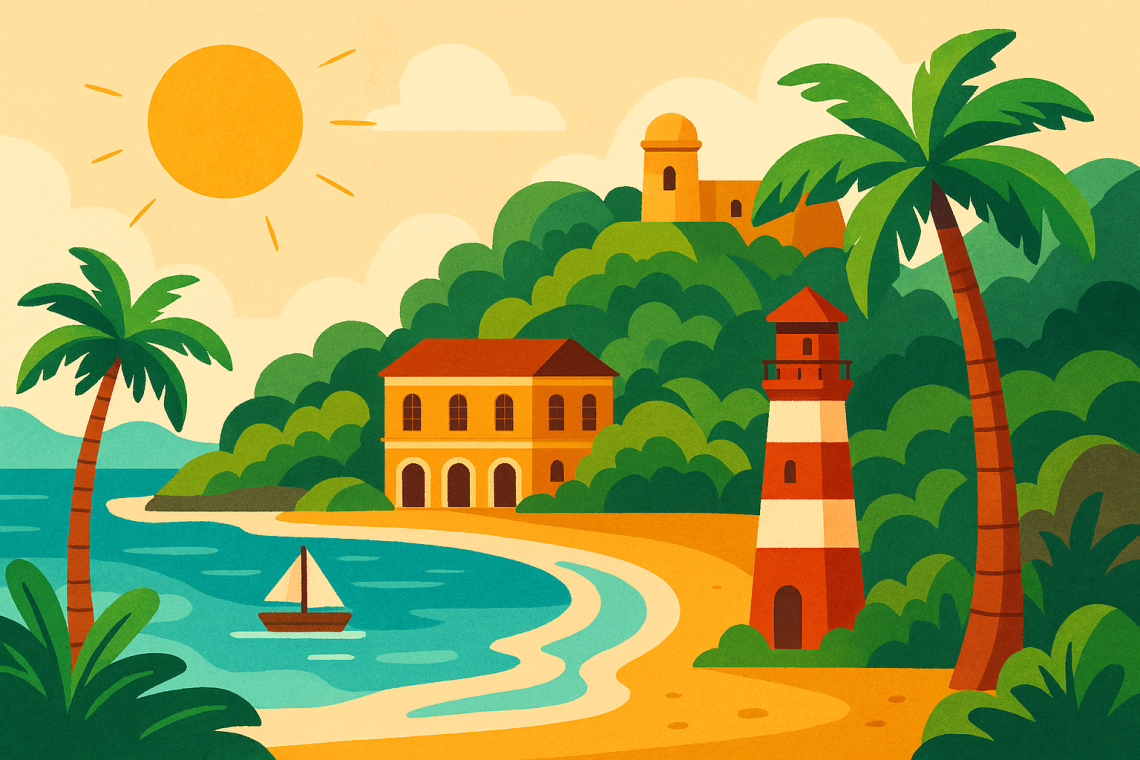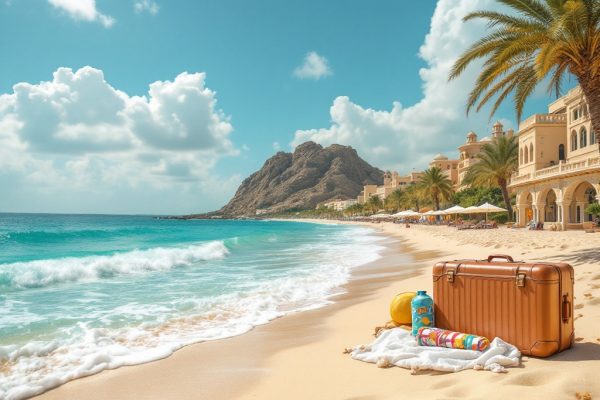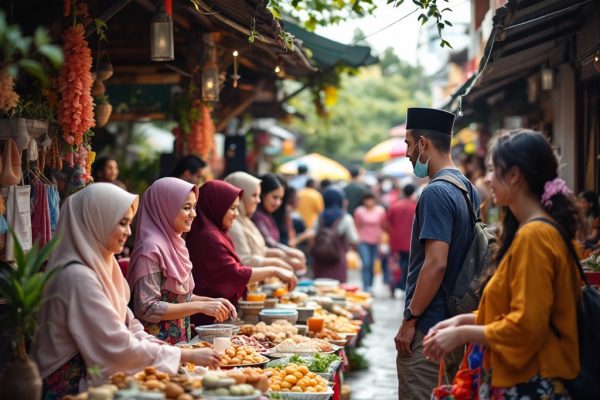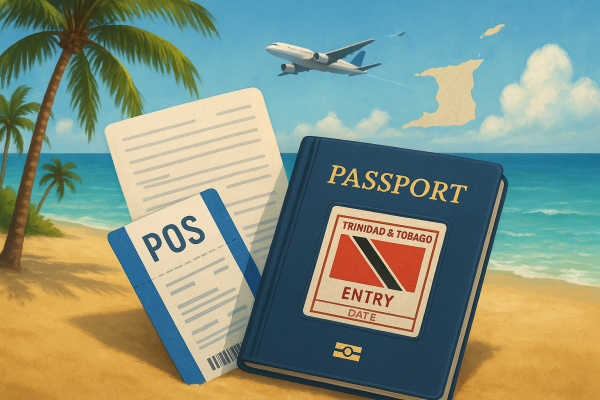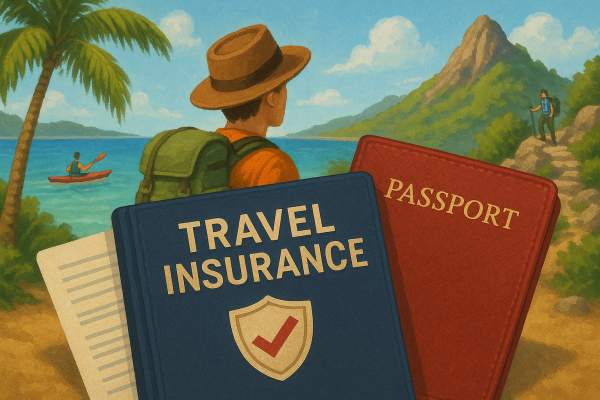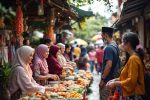Tourism in Barbados: History of the Island
Discover the captivating story of Barbados, an island nation shaped by a rich and complex history. From its colonial past and the impact of the sugar revolution to its vibrant culture and thriving tourism industry, Barbados offers a unique blend of old-world charm and modern dynamism. Explore the island’s journey to independence, its transition to a republic, and the significant role tourism plays in its economy. Delve into the fascinating cultural fusion of African and European influences, evident in the island’s music, language, and customs. Uncover the beauty of Barbados, from historic Bridgetown, a UNESCO World Heritage Site, to the natural wonders of the Barbados Wildlife Reserve. Start your Barbadian adventure today!
Important information
- Barbados’s vibrant culture blends British, African, and Indigenous influences, reflecting its complex colonial past and the impact of the sugar plantation system and slavery.
- The island transitioned from a British colony to an independent nation in 1966, later becoming a republic in 2021 with Sandra Mason as its first president.
- Sugarcane cultivation, introduced in the 1640s, transformed Barbados’s economy and society, leading to a dependence on enslaved labor and shaping its social hierarchy.
- Tourism now drives Barbados’s economy, contributing significantly to its GDP and providing numerous jobs. The Barbados Tourism Marketing Inc. (BTMI) promotes the island’s diverse offerings, focusing on sustainability.
- Key historical and natural attractions include the UNESCO World Heritage site of Bridgetown, the historic St. Nicholas Abbey, and the Barbados Wildlife Reserve.
The Unique History and Culture of Barbados
Barbados’ unique history and vibrant culture are deeply intertwined with its colonial past. English colonization in the 17th century significantly shaped the island’s traditions, an influence still evident today. This legacy is also one of plantations and slavery, a difficult past that undeniably impacted the island’s cultural development and economy. While the sugar industry once dominated, tourism now fuels Barbados’ economy, marking a significant shift in its journey.
Colonial Past and Diverse Influences
Barbadian culture is a vibrant tapestry woven from various influences. British customs and laws, established during colonial times, form a significant part of this heritage. African traditions, introduced through the slave trade, played a crucial role in shaping the island’s identity. Indigenous Arawak and Carib cultures, while less visible, further enriched this blend. The result is a unique Barbadian character, a compelling reflection of its complex past.
The Oldest Continuing Parliamentary Democracy Outside England
Established in 1639, Barbados’s parliament is the oldest outside of England, reflecting the island’s enduring commitment to democracy. This remarkable system predates all other parliamentary democracies in the Americas, signifying a rich history of representative governance.
Universal Voting Rights and Independence
Barbados achieved universal adult suffrage in 1951, a pivotal decision stemming from the 1943 Commission of Inquiry that investigated the 1937 disturbances. Later, on November 30, 1966, Barbados gained independence from British rule.
The Impact of the Plantation System and Slavery
The Barbadian landscape was forever altered by sugarcane plantations, fueled by the brutal reality of enslaved labor. This “sugar revolution” dramatically shifted the island’s economy from small, diverse farms to a system dominated by large-scale sugar production, with profound social consequences.The plantation system became deeply ingrained in Barbadian culture, forging a unique blend of West African and European traditions. This fusion is evident in the island’s music, language, and social customs. The Bajan dialect, for instance, incorporates elements of West African languages, a testament to this complex and formative history.
The Sugar Revolution and Economic Transformation
The 1640s marked a turning point for Barbados as sugar plantations became dominant. The rise of sugarcane led to the replacement of small farms with large estates, and the demand for enslaved African labor increased dramatically, causing a significant demographic shift. Enslaved Africans soon constituted the majority of the population, and the island’s economy became deeply dependent on sugar production. While sugar exports brought wealth to plantation owners, this system created a rigid social hierarchy and influenced the island’s political landscape, leaving a lasting legacy of inequality.
Cultural Roots in Plantation Slavery Economy
Barbados’s plantation history profoundly shaped its vibrant culture, blending African traditions with European influences. This fusion is evident in the island’s music, social customs, and language. Barbadian English, for instance, boasts a unique accent and incorporates Bajan, a dialect with West African roots. This rich mix creates a fascinating cultural complexity.
Transition to Independence and Republic
Barbados’s journey from British colony to independent nation is marked by significant political and social transformations. A pivotal moment was the introduction of universal adult suffrage in 1951. This paved the way for Barbados to negotiate its independence in 1966, becoming a self-governing state within the Commonwealth, with Errol Barrow as its first Prime Minister.On November 30, 2021, Barbados achieved another historic milestone, transitioning to a republic. This followed the government’s 2020 decision to remove the British monarch as head of state. Sandra Mason was subsequently elected as Barbados’s first president.
From British Colony to Independent Nation
Barbados’s path to independence began in the 1930s with a growing movement for political rights. This led to universal adult suffrage in 1951. Subsequent negotiations with Britain culminated in Barbados’s independence in 1966. The newly independent nation remained within the Commonwealth, with Errol Barrow serving as its first prime minister.
Becoming a Republic and the President of Barbados
Barbados achieved independence from Britain in 1966, initially remaining a constitutional monarchy. In 2021, Barbados transitioned to a republic, electing Sandra Mason as its first president. This historic event marked the removal of the British monarch as head of state.
The Role of Economic History in Modern Barbados
Sugar cane dramatically reshaped Barbados. Initially focused on tobacco, cotton, and indigo, the island’s economy transformed after sugar cane’s arrival in the 1640s. This crop led to a monoculture system, focusing solely on sugar production. Consequently, it increased the demand for enslaved labor, shaping the island’s social and economic structures for centuries. Plantations dominated the economy, impacting land ownership and wealth distribution. While Barbados eventually diversified, with tourism becoming a major sector, sugar cane’s legacy remains visible in the landscape, culture, and economy.
Tourism now significantly boosts Barbados’ economy. In 2019, this sector contributed $1.7 billion, representing 41.7% of the nation’s GDP. It supports numerous jobs, both directly and indirectly, with revenue funding crucial initiatives like infrastructure improvements, social programs, and government projects. Furthermore, tourism promotes Barbadian culture and natural beauty globally, solidifying its role as a key economic driver thanks to its consistent growth.
Sugar Cane Introduction and Economic Evolution
Sugar cane arrived in Barbados around 1640, dramatically transforming the island. Plantations quickly spread, fueling a new economy hungry for labor. This led to a surge in the demand for enslaved Africans, tragically altering Barbados’s demographics and society forever. The island remained under the grip of sugar for centuries.
Tourism Sector’s Contribution to Travel and Tourism GDP
Barbados’s economy thrives on tourism. Since the late 19th century, visitors have been drawn to the island’s natural beauty. The industry truly exploded after World War II with the advent of direct flights. Increased accessibility fueled investments in hotels and resorts, solidifying Barbados’s position as a leading travel destination and a major source of jobs and GDP growth.
Development and History of Tourism in Barbados
Barbados emerged as a tourist destination in the late 19th century, attracting affluent travelers from Europe and North America seeking respite in its warm climate and stunning natural beauty. Initially, the focus was on health and wellness, offering visitors rest and recuperation. The opening of The Crane Beach Hotel in 1887 marked the beginning of formal tourism on the island.
The Development of Tourism in Barbados
The Ministry of Tourism and International Transport plays a key role in Barbados’ tourism industry. The formation of the Barbados Hotel Association in 1952, the Caribbean’s first such organization, signaled a concerted effort to promote tourism. Subsequent legislation, including the 1956 Hotel Aids Act and Tourist Board Act, further incentivized hotel development.
Key Milestones
- 1887: The Crane Beach Hotel opens, marking the start of formal tourism.
- 1952: The Barbados Hotel Association is formed, the first of its kind in the Caribbean.
- 1956: The Hotel Aids Act and Tourist Board Act are enacted.
- 1976: Grantley Adams International Airport opens, improving accessibility.
- 1979: The Barbados Port Authority is established, facilitating cruise ship arrivals.
Today, the Barbados Tourism Marketing Inc. (BTMI) actively promotes the island’s diverse offerings, adapting to evolving global trends and visitor preferences. Their marketing strategies target a wide range of travelers, from luxury seekers and families to adventure enthusiasts. Utilizing digital marketing and social media, the BTMI connects with potential visitors, showcasing Barbados’ unique cultural experiences, pristine beaches, and exciting activities. With a focus on sustainability, the BTMI strives to preserve the island’s resources while enhancing the visitor experience.
Early Tourism Activities
Barbados became a popular tourist destination in the late 19th century, attracting wealthy travelers from Europe and North America seeking a relaxing escape in its warm climate and beautiful scenery. Initially, tourism centered on health and wellness, with the island’s stunning beaches, lush landscapes, and plentiful water sports proving incredibly appealing. Barbados’ rich culture and colonial history, featuring attractions like plantation houses and botanical gardens, added to its allure, offering visitors a glimpse into the island’s captivating past.
Role of Ministry of Tourism and International Transport
The Barbados Ministry of Tourism and International Transport is committed to enhancing the island’s tourism sector. They achieve this through effective policies and strategies designed to position Barbados as a top-tier travel destination. The Ministry actively promotes Barbados’ diverse attractions and manages international transport to facilitate visitor access. This approach strengthens tourism and benefits the Barbadian economy.
The Influence of Barbados Tourism Marketing Inc. (BTMI)
The Barbados Tourism Marketing Inc. (BTMI) champions the island through targeted campaigns showcasing its vibrant culture and stunning scenery. These initiatives have significantly boosted tourism to Barbados. Beyond this crucial work, the BTMI also diversifies the island’s offerings by promoting heritage and eco-tourism, making Barbados an even more alluring destination.
Popular Tourist Destinations and Attractions in Barbados
Bridgetown, a UNESCO World Heritage Site, captivates visitors with its historic charm, particularly its Garrison. Another popular destination is St. Nicholas Abbey, one of the island’s oldest plantation houses. Animal lovers shouldn’t miss the Barbados Wildlife Reserve, home to green monkeys and other intriguing creatures.
Historic Bridgetown and UNESCO World Heritage Sites
Bridgetown, the capital of Barbados, is a UNESCO World Heritage Site showcasing stunning British colonial architecture. The Parliament Buildings and Garrison Savannah are prime examples of this heritage, reflecting the island’s history as a British colony. Bridgetown’s port played a vital role in the transatlantic trade, significantly shaping both its economy and cultural development.
St. Nicholas Abbey and Barbados Wildlife Reserve
St. Nicholas Abbey, a Jacobean mansion built in 1660, offers a glimpse into Barbados’ colonial past. As one of only three such structures in the Western Hemisphere, it provides visitors a unique look at the island’s sugar plantation history. Beyond historical landmarks, Barbados boasts natural beauty, exemplified by the Barbados Wildlife Reserve. Within this mahogany wood, animals like green monkeys, tortoises, deer, and peacocks roam freely, creating a truly memorable experience.

